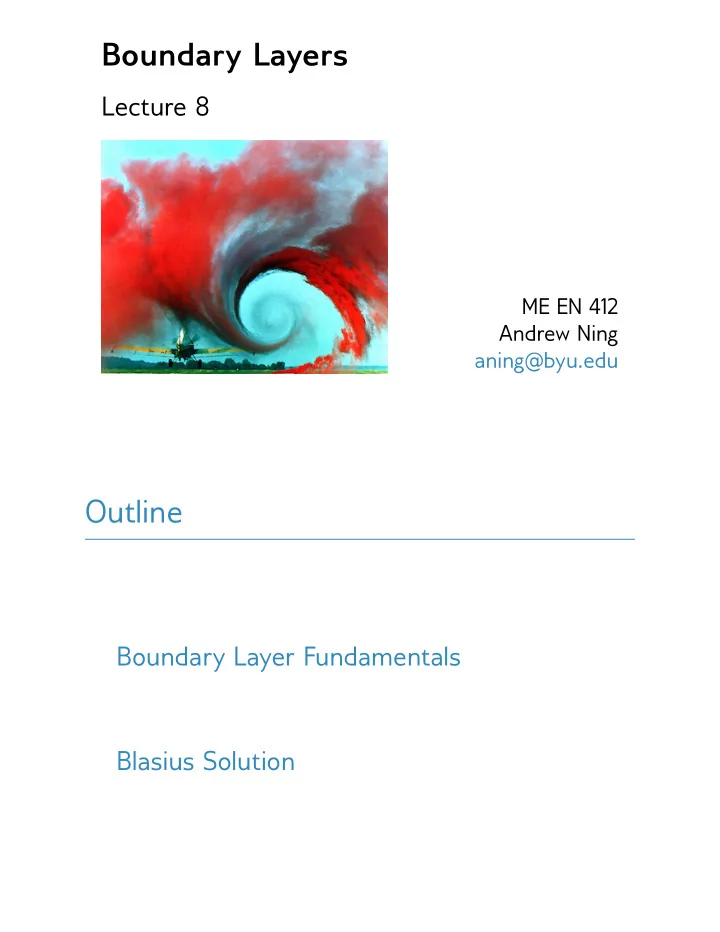

Boundary Layers Lecture 8 ME EN 412 Andrew Ning aning@byu.edu Outline Boundary Layer Fundamentals Blasius Solution
Boundary Layer Fundamentals What is a boundary layer? transition turbulent laminar separation velocity wake deficit stagnation point
turbulent laminar Boundary Layer Thickness
Displacement Thickness � ∞ � � 1 − ρu δ ∗ = dy ρ e V e 0
A practical use of δ ∗ effective body actual body Boundary Layer Momentum Thickness
� ∞ � � ρu 1 − u θ = dy ρ e U e U e 0 Blasius Solution
Within a boundary layer, how are these related? ∂ ∂ ? ∂y ∂x and ? u v ∂p ∂y = 0
∂u ∂x + ∂v ∂y = 0 ∂y = ν∂ 2 u u∂u ∂x + v∂u ∂y 2 Analytic solution (flat plate, laminar flow) 5 x δ = √ Re x δ ∗ = 1 . 72 x √ Re x θ = 0 . 664 x √ Re x
� τ w = µ ∂u � � ∂y � y =0 c f = τ w q ∞ c f = 0 . 664 √ Re x c df = 1 . 328 √ Re L
empirical relationships for a flat plate For turbulent flow there is no analytic solution Schlichting: δ = 0 . 37 x δ ∗ = 0 . 046 x θ = 0 . 036 x Re 0 . 2 Re 0 . 2 Re 0 . 2 x x x c f = 0 . 0592 Re 0 . 2 x ( log 10 Re L ) 2 . 58 or c df = 0 . 074 0 . 455 c df = Re 0 . 2 L
Recommend
More recommend